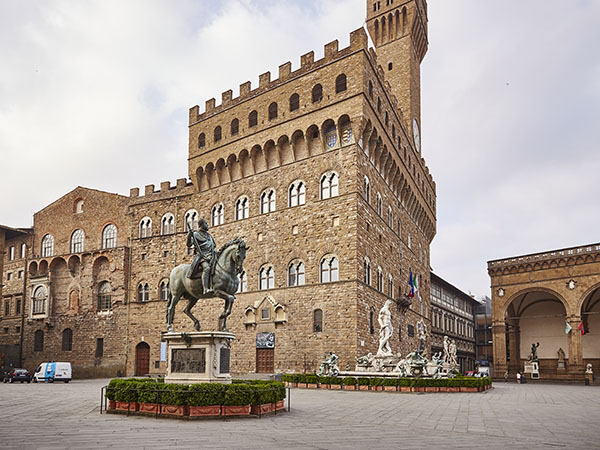Following Machiavelli’s footsteps
The itinerary we are about to follow traces events in the life of Machiavelli, touching on places in Florence that are in some way connected to important stages in the life of the Secretary. The places we will visit have enormous historical and artistic value, and Machiavelli represents only one possible visual angle - significant, but not necessarily the most important, and certainly not the best known - from which to view them. The stages of this itinerary are intended, however, to serve as entry point for a broader view of the Renaissance seen as a phenomenon lying at the roots of our European culture. Accordingly, each stage has been considered within the context of conceptual categories - harmony, conflict, the reason-imagination dialectics and that of innovation-stagnation, the relationship between the center and the periphery, and between identity and diversity - themes developed in parallel in other itineraries as well, so as to represent the Florentine and Italian aspect, distinct in its particularity but not separated from the rest, of a moment in European history and culture.
The Machiavelli itinerary starts under the sign of Girolamo Savonarola, from his seat in San Marco, since the friar represents a basic reference point for Machiavelli. In one of his first recorded "political", but unofficial, writings, a letter to Ricciardo Becchi in 1498, Machiavelli furnishes information on the Friar's activity. Machiavelli, in interpreting the actions of Savonarola, reveals the tension existing between the moment of reason, incarnated by his analyses, and the religious-imaginary side represented by Savonarola's acts, which however, insofar as efficacious, are fully consonant with reason.
In the second stage, moving forward to the time of the Medicean government, we will go to Palazzo Medici Riccardi where The Mandrake (Mandragola), the famous play by Machiavelli, may have been performed on a solemn occasion. On the one hand, the symbolic representation of Medicean political power will emerge, while on the other we will see how Machiavelli's political ambition is linked to the creation of a little masterpiece of literature.
In the third stage we will visit the Basilica of San Lorenzo and return to the letter to Ricciardo Becchi to examine the image of woman (and hence the most emblematic of diversities, that of gender) in Machiavelli and his Florence.
The next four stages, Piazza della Signoria, Palazzo Vecchio, the Loggia dei Lanzi and the Bargello, will be devoted to the years when Machiavelli worked for the Florentine Republic, confronting the problem of the new regime's symbolic-imaginary representation of power, the role of a "citizens' militia" in the conflicts that embroiled Florence, and the relationship between the central power and the Florentine countryside. Lastly, we will visit the Tabernacle of the Stinche, recalling the return of the Medici to Florence and the incarceration and torture of Machiavelli for political motives.
At the Casa Buonarroti and Santa Croce we will recall the last moments in the life of Machiavelli and his death. Here we will pause to examine the fortifications of Florence, on which both Machiavelli and Michelangelo Buonarroti worked for a few brief years, and the dramatic conflicts embroiling Florence at the time.
The itinerary ends at Palazzo Strozzi, seat of a Machiavellian Archive that projects us toward Machiavelli's European dimension and shows us the concrete dissemination of his works, starting already in the 16th century, through Spain, France, Poland and the rest of Europe.
